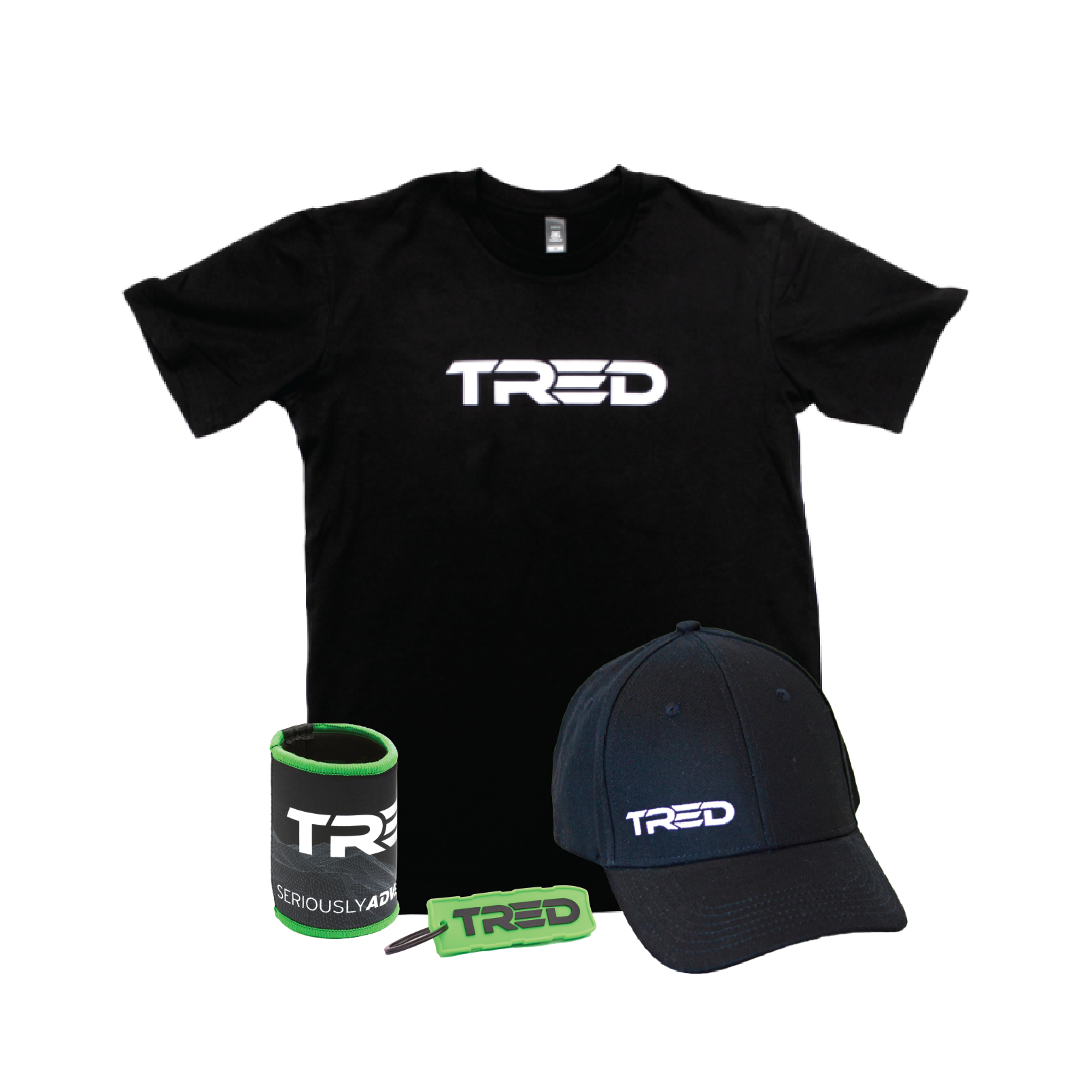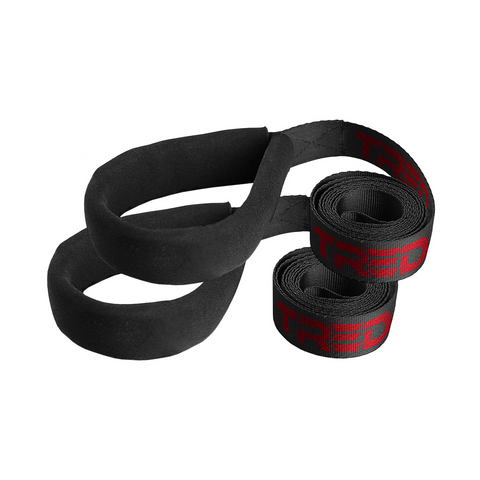Winch vs. TRED Recovery Boards
Picture this, you’re on your way to work on Monday morning and you’re stuck in traffic – again. Odds are you’re not thinking about the day’s meetings and that unfinished spreadsheet. Our money’s on you daydreaming about sandy, muddy, dusty tracks and your 4x4.
But, before you start thinking about hitting the tracks over the weekend, you want to make sure your vehicle and your passengers are safe. We’re not trying to rain on your parade but getting bogged and having to wave down the next passer-by for help is never fun – trust us!
So, to protect you, your passengers and your vehicle, you want to make sure you have the right recovery equipment. One question we often get asked is ‘should I get TRED recovery boards or install a winch?’
It’s a great question and about time we answered it. So, let’s compare the two options and let you decide for yourself.

What is a winch?
It may seem obvious, but this is a great place to start.
Put simply, a winch is a self-recovery device for your vehicle. They are generally attached to your bull bar and contain a spool of either synthetic or steel cable. If you find yourself bogged or stuck in some tricky terrain, you simply attach the end of the cable around a sturdy anchor point (like a tree stump) using the appropriate gear and the winch will do the rest.
Winches have evolved drastically over the years. Today, they range from cheaper entry-level options to more expensive, flashy models.
Picking the right winch
Winches are not a one-size-fits-all type of operation. You’ll need to find the right winch that fits your vehicle and bull bar.
Not all bull bars and winches are compatible. For example, your bull bar mounts may not be rated for a winch pulling at a higher weight and this may cause your chassis to twist! On the other hand, picking a winch that is too small for your vehicle is dangerous, as the winch’s motor works overtime trying to pull your vehicle out.
There are typically three sizes of winches available:
- Between 8,000 and 9,000 lbs
- 10,000 lbs
- 12,000 to 13,000 lbs.
The golden rule is to pick a winch that is 1.5 x your gross vehicle mass (GVM). GVM is the maximum loaded weight of your vehicle while driving on the road – this includes any trailers, gear or passengers loaded on your vehicle.
If you’re bad at crunching numbers or aren’t sure about your options, always go talk to a professional before making a decision.
Another thing to consider is the price point.
Winches can vary wildly in price and quality. On the lower end of the spectrum, you might be able to pick up a dirt-cheap winch for a few hundred dollars. The quality of these winches can be questionable, so make sure you choose carefully! The dollars saved can be great now, however when it comes time to use the winch, you need it to work.
On the other end, top-quality winches can easily go well over a thousand dollars. These are the best of the best, but may not be necessary for every explorer.

Can I install a winch myself?
Installing a winch yourself is not overly complicated. If you know your way around a car, electronics and can physically lift the winch, you shouldn’t have too much trouble. But, as always, it’s best to get a workshop to do it for you.
A workshop will spool the cable correctly and make sure it matches the specs of your vehicle and, most importantly, that it works correctly.
When it comes to protecting your vehicle and passengers within it, we always recommend having a professional take care of it – especially if you are new to 4x4ing.

TRED recovery boards
On the other side of the debate, we have TRED recovery boards. These are specially designed for you off-road enthusiasts of all experience levels.
As always, our recovery boards are made from high-quality materials such as our custom blend engineered nylon in the TRED Pro and TRED HD models or the Automotive grade polypropylene in the TRED GT models, delivering incredible strength and durability. They’re also created from a tyre modelling database, which analysed hundreds of leading manufacturer’s tread patterns to develop the most effective grip profile to suit your vehicle.
Plus – they come in a bunch of funky colours and can also be used as a shovel!

Winch vs. TRED recovery boards
Let’s compare the two options side-by-side.
|
Winch |
TRED recovery boards |
|
|
Weight |
28 – 50kg Plus the weight of the bar work to attach the winch which can be up to 100kg |
2.25kg - 4.1kg per board |
|
Size |
Around 560 mm x 280 mm x 160 mm for 12,000 lb |
1090 mm x 320 mm x 62 mm (TRED HD) |
|
Cost |
Anywhere from a few hundred to over a thousand dollars. Plus the costs of the bar work to attached it to your vehicle |
Starting from $250 USD |
|
Maintenance |
Regularly run and test winch. Remove from bar work to service gears and motor as required. |
Not a lot, sometimes they need a wash after a rough day on the tracks. |
|
Installation |
DIY at home or through workshop. |
Insert into a bag, through in the back of the car or mount them to your vehicle or racks. |
|
Conditions |
Great for all conditions. |
Great for all conditions. Excellent in sand, mud and snow. |
|
Vehicle specs |
1.5 x GVM. |
up to 4.5 tonnes OR 2.25 tonnes per multi axel. |
|
Waterproof |
Only more expensive models. |
Big time. |
|
Warranty |
Depends on manufacturer. |
Lifetime warranty against manufacturing defects. |
Let's look at a typical cost scenario;
Winch - Winch compatible bar $2,500, winch mid range with synthetic rope $1,000, Winch accessories $300 (Tree Trunk Protector, dampener, gloves, shackles), fitment $500. Total cost $4,300, extra weight added: 100 to 120kg.
TREDs - Total Cost for 4 boards (2 Pairs); $458 (4 x TRED GT’s) up to $658 (4 x TRED Pro’s). In many cases you might only require 2 boards (starting at only $229) when used correctly and time is taken to set up the recovery right. Weight added for 4 boards: 11kg to 16.5kg

Our recommendation
Talk to your mechanic or do more of your own research. While we have given a general overview here, there are so many variables at play when it comes to vehicle recovery.
TRED recovery boards are cost-effective, lightweight and incredibly portable – perfect for those who love getting out there with their buddies. They’re great in sand and snow and even double as a shovel. Finally, there is no complicated installation, no wiring; simply throw them in the back, or on, your vehicle and you’re off!

If you use your vehicle to escape the rat race over the weekend, you may not need to fork out thousands of dollars for a winch installation. What we can say is that while a winch may not be necessary for every level of 4x4 adventurer, there’s nothing wrong with having both.
In fact, for the more experienced explorers out there, we would probably recommend having both – especially for those more rugged trips. In many cases, a winch used in conjunction with TREDs can be a perfect recovery option, but let's not overload information just now, we will cover this off in detail in another article.
At the end of the day, it’s you and your situation that will determine which is your best option. Plus, you can always have both - can’t you?































